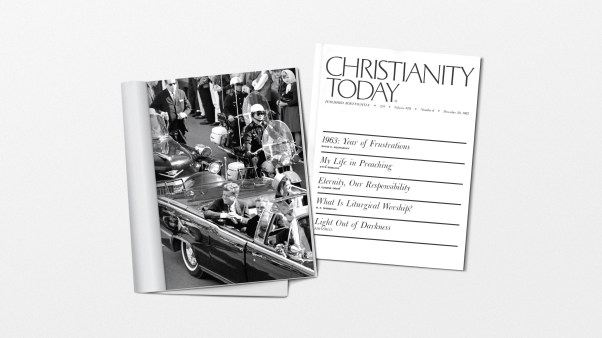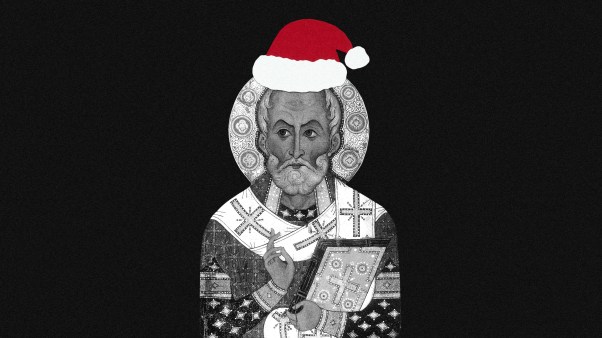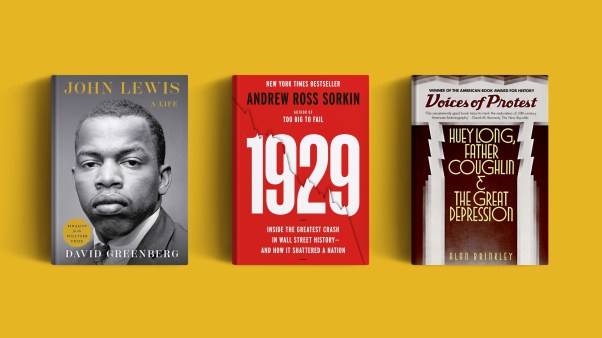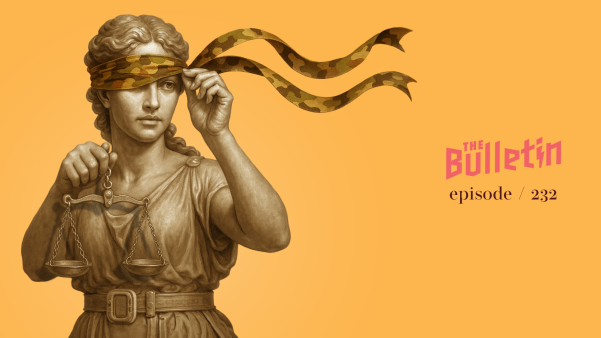In the 1920s, as conflicts between "fundamentalists" and "modernists" heated up, change in American culture was accelerating. Some Christians celebrated these dramatic changes; others pointed to the following items as proof that things were only getting worse:
All through the 1920s, with Prohibition in force, criminal gangs battled to control the illegal liquor business—most notoriously in Al Capone's Chicago. Between 1920 and 1927, 250 people were murdered in Chicago gang warfare.
Women were given the vote in 1922 (conservative Christians were against suffrage ten-to-one, but two notable supporters of women's suffrage were fundamentalists Billy Sunday and William Jennings Bryan). In 1925, the first woman governor was inaugurated in Wyoming. In 1928, Amelia Earhart became the first woman to cross the Atlantic in a plane.
Optimism about the economy (and greed) produced an era of wild speculation in the stock market. On September 3, 1929, stocks reached an all-time high—only to crash to an all-time low by October 29. President Herbert Hoover still claimed the economy was "on a sound and prosperous basis."
 The Idolatry Of Situational EthicsThe New Immorality, by David A. Redding (Revell 1967, 156 pp., .50), and The New Theology and Morality, by Henlee H. Barnette (Westminster, 1967, 120 pp., .85, paper), is reviewed by Milton D. Hunnex, professor of philosophy, Willamette University, Salem, Oregon.David Redding’s The New Immorality is a series of sermon-like essays that reveal a profound grasp of what the old Christian morality is all about. The First Commandment is given its proper priority, and love is kept under law. Moral principles are not scrapped because their application may vary from situation to situation. Nor are they scrapped because “only God Himself knows the difference between right and wrong in each unique instance.” “Every man is forced finally … to wait upon God,” Redding writes; yet “God never needs to sacrifice principles to satisfy any situation.” On the contrary, he implements his love with his principles “so that love [will] not be a spineless lump.”What of the relevance of the Bible? Redding believes we are spiritual contemporaries of biblical and Reformation man. “The chief end of man in A.D. 3020, as it was for Calvin, will be ‘to glorify God and enjoy Him forever.’ ” The alternative to legalism is not a God-forsaking ethic of “love and nothing else,”; it is a life tuned to God’s will. “We cannot state the necessity of the First Commandment strongly enough,” Redding writes. Jesus said, “Love the Lord thy God with all thy heart …” (Mark 12:30). And to the lawyer who questioned him about how he might gain eternal life, Jesus said, “Keep the commandments.” (Matt. 19:17).To speak of loving one’s neighbor without also speaking of loving God is idolatrous. “This Command,” says Redding, “never strays near the subject of neighbor until after the love of God has been underlined.” One may not be able to love God without also loving his neighbor, but he cannot love his neighbor in the way Jesus did without also loving God. “Love of God and neighbor are two sides of one coin,” argues Redding. “Destroying one destroys the other.”The situationist reveals his idolatry in his eagerness to speak of love without also speaking of God, or his eagerness to substitute love for God, or his eagerness to eliminate reference to God altogether. He is no better off than the legalist whom he rightly condemns for failing to love neighbor if he in turn pursues “love and nothing else.” Either love includes love of God first or it is not Christian love.The primary theological error of the new morality is its neglect of the First Commandment and its failure to follow Jesus in obedience to it. Redding rightly sees this and shows with uncommon grace that the new morality is itself part of the moral confusion of our time rather than its remedy.Reading for PerspectiveCHRISTIANITY TODAY’S REVIEW EDITORS CALL ATTENTION TO THESE NEW TITLES:• Theological Dictionary of the New Testament, Volume IV, edited by Gerhard Kittel (Eerdmans, .50). The fourth installment of a monumental eight-volume work provides invaluable research on key New Testament words.• The Church of the Lutheran Reformation: A Historical Survey of Lutheranism, by Conrad Bergendoff (Concordia, ). The history of a world-wide communion that for centuries has emphasized Scripture, the Gospel, and the sacraments and by so doing brought Christ to men of all nations.• Setting Men Free, by Bruce Larson (Zondervan, .95). In a personal, biblical, and inspiring way, Larson describes the art of living as a Christian and the gifts God gives to believers for “The Great Adventure.”The special merit of Professor Barnette’s The New Theology and Morality is its attempt to survey under one cover all the “exciting new developments emerging in contemporary Protestant thought.” Barnette offers the reader everything from perceptive observations on the new bondage of Hefner’s Playboy freedom to the meaning of the “man for others” idea for the Church today. But his pursuit of the let’s be kind to them” approach makes him hesitant to attribute to the secular theologians ideas that they themselves are perfectly willing to acknowledge. He cleans his fish with a dull knife. For example, he notes that “secular theologians stress the humanity of Jesus to the neglect of his unique, divine nature,” when it should be clear to him that they forthrightly reject “his unique, divine nature.” Radical differences are toned down for the sake of appearing objective. A good example of this is his attempt to cope with “the new ethics.” Here he examines the arguments of Bultmann, Robinson, and Fletcher. Significant points are scored, but the essentially idolatrous character of situational ethics never gets pointed up as it does in the Redding volume. Nor is there any attempt to unscramble the hideously confused logic and language of situationist writers. Barnette sees that Bultmann’s insistence that “the moment contains all that is necessary to understand the will of God” strips away all means by which the Christian can carry out love of neighbor, but he does not see that the danger in Bultmann’s existentialism arises from his repudiation of the very kind of revelation his ethics must have if it is to do its job. Also, the notion that the “old morality starts with principles, the new with persons” is simply a caricature of both Bible and logic. The old morality starts with God, and putting persons before principles is itself a principle that is no less liable to legalistic corruption that any other principle.Situationists often use the term “legalism” to apply to any use of principles or rules, but the use of principles and rules is not per se legalistic nor is their use per se “putting principles before persons.” Also, the idea that since every moral situation is unique, rules are inapplicable, is simply misconceived. If what the situationists said were so, moral language would be impossible. Barnette does identify an illogical element of situationist ethics that Plato long ago found to be the Achilles heel of all forms of relativism. If no judgment can be ventured prior to the actual moral situation, than not even the assertion that one should respond to the demands of love—whatever that may mean—can be prescribed in advance of the actual making of a moral decision. To say, for example, that one should commit adultery rather than ignore the unconditional demands of love is to impose a legalism no less binding than the older and more obvious forms.The new moralists are in trouble. They have ruled out the supernatural work of the Holy Spirit; yet their ethics calls for, indeed necessitates, the very kind of thing they have ruled out. Although their ideas may make sense if one is talking about a spirit-filled Christian, they make no sense if applied to the men “come of age” for whom they are intended.What Barnette and Redding both seem to point up is the ugly fact that situationist ethics is itself a part of the very moral confusion to which it addresses itself as a remedy and that those who would bolster morality in the new terms are themselves party to the very immorality they are trying to ameliorate.Casting Spells And Working CharmsWizzards That Peep and Mutter, by Paul Bauer (Revell, 1967, 160 pp., .50), is reviewed by Andre Bustanoby, pastor, Arlington Memorial Church, Arlington, Virginia.Would you believe that you can run down to your corner drugstore and pick up a book on how to cast spells and work charms? Wizzards That Peep and Mutter, a book that reveals the fantastic growth of superstition and occultism, tells of the existence of books like The Sixth and Seventh Books of Moses, a “how to” book on witchcraft. Books on astrology have littered drugstore magazine racks for years, but now along with your high-priced antibiotics you can buy books telling how to cure every kind of ailment—including weak eyesight—through the use of witchcraft. The most startling cure is the one recommended for syphilis: have yourself buried up to your neck in fresh horse manure!Wizzards That Peep and Mutter, whose catchy title comes from Isaiah 8:19, discusses from the Christian point of view a fantastic variety of superstitious beliefs. The author has spent a lifetime researching superstition. He writes about charms, spells, telepathy, clairvoyance, soothsaying, dreams, ghosts, hauntings, spiritism, flying saucers, spiritual healing, demons, witches, angels, the divining rod, astrology, and the miracles at Lourdes, Fatima, and Konnersreuth. The case studies make interesting reading, and Bauer usually offers rational explanations for the astounding stories he relates. But the reader is often left up in the air wondering if there is, after all, something supernatural about it all.Bauer’s critical examination of clairvoyance is a good example. He notes that chance may play a large part in this phenomenon: “A thousand people may dream of an accident. If one happens in reality, the other 999 cases are forgotten.… It is not the clairvoyant who makes the phenomenon remarkable but the credulous public who are always ready to believe anything.” Yet, having said that, he closes his discussion with this observation: “There are, however, some spontaneous cases that are so remarkable that they deserve further examination.”The author’s explanation in the preface of the why and the what of superstition is most enlightening. Men are dissatisfied with the materialistic view of the world and are looking for another explanation. Some turn to the Scriptures. But millions are turning to superstition. The essential difference between biblical Christianity and superstition is this:
The Idolatry Of Situational EthicsThe New Immorality, by David A. Redding (Revell 1967, 156 pp., .50), and The New Theology and Morality, by Henlee H. Barnette (Westminster, 1967, 120 pp., .85, paper), is reviewed by Milton D. Hunnex, professor of philosophy, Willamette University, Salem, Oregon.David Redding’s The New Immorality is a series of sermon-like essays that reveal a profound grasp of what the old Christian morality is all about. The First Commandment is given its proper priority, and love is kept under law. Moral principles are not scrapped because their application may vary from situation to situation. Nor are they scrapped because “only God Himself knows the difference between right and wrong in each unique instance.” “Every man is forced finally … to wait upon God,” Redding writes; yet “God never needs to sacrifice principles to satisfy any situation.” On the contrary, he implements his love with his principles “so that love [will] not be a spineless lump.”What of the relevance of the Bible? Redding believes we are spiritual contemporaries of biblical and Reformation man. “The chief end of man in A.D. 3020, as it was for Calvin, will be ‘to glorify God and enjoy Him forever.’ ” The alternative to legalism is not a God-forsaking ethic of “love and nothing else,”; it is a life tuned to God’s will. “We cannot state the necessity of the First Commandment strongly enough,” Redding writes. Jesus said, “Love the Lord thy God with all thy heart …” (Mark 12:30). And to the lawyer who questioned him about how he might gain eternal life, Jesus said, “Keep the commandments.” (Matt. 19:17).To speak of loving one’s neighbor without also speaking of loving God is idolatrous. “This Command,” says Redding, “never strays near the subject of neighbor until after the love of God has been underlined.” One may not be able to love God without also loving his neighbor, but he cannot love his neighbor in the way Jesus did without also loving God. “Love of God and neighbor are two sides of one coin,” argues Redding. “Destroying one destroys the other.”The situationist reveals his idolatry in his eagerness to speak of love without also speaking of God, or his eagerness to substitute love for God, or his eagerness to eliminate reference to God altogether. He is no better off than the legalist whom he rightly condemns for failing to love neighbor if he in turn pursues “love and nothing else.” Either love includes love of God first or it is not Christian love.The primary theological error of the new morality is its neglect of the First Commandment and its failure to follow Jesus in obedience to it. Redding rightly sees this and shows with uncommon grace that the new morality is itself part of the moral confusion of our time rather than its remedy.Reading for PerspectiveCHRISTIANITY TODAY’S REVIEW EDITORS CALL ATTENTION TO THESE NEW TITLES:• Theological Dictionary of the New Testament, Volume IV, edited by Gerhard Kittel (Eerdmans, .50). The fourth installment of a monumental eight-volume work provides invaluable research on key New Testament words.• The Church of the Lutheran Reformation: A Historical Survey of Lutheranism, by Conrad Bergendoff (Concordia, ). The history of a world-wide communion that for centuries has emphasized Scripture, the Gospel, and the sacraments and by so doing brought Christ to men of all nations.• Setting Men Free, by Bruce Larson (Zondervan, .95). In a personal, biblical, and inspiring way, Larson describes the art of living as a Christian and the gifts God gives to believers for “The Great Adventure.”The special merit of Professor Barnette’s The New Theology and Morality is its attempt to survey under one cover all the “exciting new developments emerging in contemporary Protestant thought.” Barnette offers the reader everything from perceptive observations on the new bondage of Hefner’s Playboy freedom to the meaning of the “man for others” idea for the Church today. But his pursuit of the let’s be kind to them” approach makes him hesitant to attribute to the secular theologians ideas that they themselves are perfectly willing to acknowledge. He cleans his fish with a dull knife. For example, he notes that “secular theologians stress the humanity of Jesus to the neglect of his unique, divine nature,” when it should be clear to him that they forthrightly reject “his unique, divine nature.” Radical differences are toned down for the sake of appearing objective. A good example of this is his attempt to cope with “the new ethics.” Here he examines the arguments of Bultmann, Robinson, and Fletcher. Significant points are scored, but the essentially idolatrous character of situational ethics never gets pointed up as it does in the Redding volume. Nor is there any attempt to unscramble the hideously confused logic and language of situationist writers. Barnette sees that Bultmann’s insistence that “the moment contains all that is necessary to understand the will of God” strips away all means by which the Christian can carry out love of neighbor, but he does not see that the danger in Bultmann’s existentialism arises from his repudiation of the very kind of revelation his ethics must have if it is to do its job. Also, the notion that the “old morality starts with principles, the new with persons” is simply a caricature of both Bible and logic. The old morality starts with God, and putting persons before principles is itself a principle that is no less liable to legalistic corruption that any other principle.Situationists often use the term “legalism” to apply to any use of principles or rules, but the use of principles and rules is not per se legalistic nor is their use per se “putting principles before persons.” Also, the idea that since every moral situation is unique, rules are inapplicable, is simply misconceived. If what the situationists said were so, moral language would be impossible. Barnette does identify an illogical element of situationist ethics that Plato long ago found to be the Achilles heel of all forms of relativism. If no judgment can be ventured prior to the actual moral situation, than not even the assertion that one should respond to the demands of love—whatever that may mean—can be prescribed in advance of the actual making of a moral decision. To say, for example, that one should commit adultery rather than ignore the unconditional demands of love is to impose a legalism no less binding than the older and more obvious forms.The new moralists are in trouble. They have ruled out the supernatural work of the Holy Spirit; yet their ethics calls for, indeed necessitates, the very kind of thing they have ruled out. Although their ideas may make sense if one is talking about a spirit-filled Christian, they make no sense if applied to the men “come of age” for whom they are intended.What Barnette and Redding both seem to point up is the ugly fact that situationist ethics is itself a part of the very moral confusion to which it addresses itself as a remedy and that those who would bolster morality in the new terms are themselves party to the very immorality they are trying to ameliorate.Casting Spells And Working CharmsWizzards That Peep and Mutter, by Paul Bauer (Revell, 1967, 160 pp., .50), is reviewed by Andre Bustanoby, pastor, Arlington Memorial Church, Arlington, Virginia.Would you believe that you can run down to your corner drugstore and pick up a book on how to cast spells and work charms? Wizzards That Peep and Mutter, a book that reveals the fantastic growth of superstition and occultism, tells of the existence of books like The Sixth and Seventh Books of Moses, a “how to” book on witchcraft. Books on astrology have littered drugstore magazine racks for years, but now along with your high-priced antibiotics you can buy books telling how to cure every kind of ailment—including weak eyesight—through the use of witchcraft. The most startling cure is the one recommended for syphilis: have yourself buried up to your neck in fresh horse manure!Wizzards That Peep and Mutter, whose catchy title comes from Isaiah 8:19, discusses from the Christian point of view a fantastic variety of superstitious beliefs. The author has spent a lifetime researching superstition. He writes about charms, spells, telepathy, clairvoyance, soothsaying, dreams, ghosts, hauntings, spiritism, flying saucers, spiritual healing, demons, witches, angels, the divining rod, astrology, and the miracles at Lourdes, Fatima, and Konnersreuth. The case studies make interesting reading, and Bauer usually offers rational explanations for the astounding stories he relates. But the reader is often left up in the air wondering if there is, after all, something supernatural about it all.Bauer’s critical examination of clairvoyance is a good example. He notes that chance may play a large part in this phenomenon: “A thousand people may dream of an accident. If one happens in reality, the other 999 cases are forgotten.… It is not the clairvoyant who makes the phenomenon remarkable but the credulous public who are always ready to believe anything.” Yet, having said that, he closes his discussion with this observation: “There are, however, some spontaneous cases that are so remarkable that they deserve further examination.”The author’s explanation in the preface of the why and the what of superstition is most enlightening. Men are dissatisfied with the materialistic view of the world and are looking for another explanation. Some turn to the Scriptures. But millions are turning to superstition. The essential difference between biblical Christianity and superstition is this:Faith is the devoted service of the creature to his Creator. It is lived out in trust, obedience and love. In superstition, the deep-rooted will of man seeks to seize hold of the divine and make the powers of the invisible world serve his own needs and desires. It offers directions and methods for getting these powers into our clutches so that we may control and use them.
The Word From The StratosphereNew Directions in Theology Today, Volume V: Christian Life, by Paul Hessert (Westminster, 1967, 192 pp., .95), is reviewed by Charles E. Hummel, president, Barrington College, Barrington, Rhode Island.Today there is little active dialogue between the theologian and the church. This series, edited by William Hordern, aims to bridge the gulf. For the busy pastor and concerned laymen who cannot keep pace with an ever-expanding theological literature, New Directions in Theology Today presents concise descriptions of the current theological scene.Paul Hessert recognizes that though some ages have had a clear picture of Christianity, ours does not. In periods of theological uncertainty, he says, “prior to the creation of theological systems, Christianity can only be described as a life.” Here he notes the precedent set by Augustine, the Reformers, and the Puritans, including William Ames, who “held that theology comes out of life as shaped by Scripture, not out of Scripture as shaped by logic.” Modern theologians such as Barth, Brunner, the Niebuhrs, and Bonhoeffer have cast their thought in the form of ethics.Hessert faces a formidable task as he attempts to survey theological literature on the complex subject of the Christian life. He deals with Christian life as sanctification and describes the current demand for reinterpreting the questions of God, Christ, and the Bible. Chapters on “The World Come of Age” and “The Living Body of Christ” bring to the fore pertinent questions about the nature of the Church and the place of Christianity in a secular world.Hessert gives an excellent survey in readable language. He summarizes questions raised by contemporary theologians. He also provides a historical panorama in which he aptly characterizes the major theological eras in church history. Of necessity, such a survey offers few clear answers. Yet the chapter entitled “Personal Life in the Body” does yield—all too briefly—concrete suggestions and a sense of direction.The author makes two critical assertions about the contemporary theological scene:
One common theme running through nearly all current discussions of the Christian life is that somehow the period in which we now live is separated by a watershed from all that has gone before.
[The modern situation puts] the Christian life in a different context from the days when men could assume that God had spoken in Scripture to give them the clear plan for a way of life leading to sure salvation. In view of the recognition of historical relativity as it encompasses the Bible and traditional theology, what does the Christian life mean? Has it any characteristic style of its own?
But we may well ask whether our age really is unique in this respect. Despite assertions by modern theologians, millions of Christians today are finding in Scripture clear direction for meeting the problems of daily life. Furthermore, how can we arrive at any settled conviction about the Christian life without confidence in the Scripture as authoritative and normative?Kierkegaard complained of Hegel that when one asked for a street address in Copenhagen, he was given a map of Europe. Hessert gives a map of European and American theological trends from a perspective of 30,000 feet. And often the theologians he quotes also resemble pilots surveying the landscape from 30,000 feet. Here lies much of the reason for the gap between the theologian and the church. Most modern theological writing rarely reaches down to ground-level reality. Hessert’s volume is informative as a strategic survey. One wishes, however, that he could have found a way to come down and travel with the reader on foot for a longer distance, up hill and down dale through the tactical issues of Christian living.Religious Liberty And Vatican IiReligious Liberty: An End and a Beginning, edited by John Courtney Murray, S. J. (Macmillan, 1966, 192 pp., .95) and Paul Blanshard on Vatican II, by Paul Blanshard (Beacon, 1966, 371 pp., .95), are reviewed by James Leo Garrett, professor of Christian theology, Southern Baptist Theological Seminary, Louisville, Kentucky.For Americans especially, Vatican Council II’s Declaration on Religious Liberty was one of the most significant products of the four-year council. The council’s principal expert on religious liberty, John Courtney Murray, has edited nine essays that were originally read at an Institute on Religious Freedom at Loyola University in February, 1966. The authors are Roman Catholic, Protestant, and Jewish.In his own essay, Murray traces in detail the various schemata on religious liberty considered by the council, from the early emphasis on “freedom of conscience” to the final emphasis on religious liberty as a juridical immunity from coercion that derives from the dignity of human persons and is limited only by “the necessary exigencies of the public order.” David Noel Freedman finds religious liberty in ancient Israel in the very existence of the prophetic movement, while John L. McKenzie, S. J., finds Christian freedom rooted in the non-coercive nature of love and calls for more internal freedom within the Roman Catholic Church. Francis J. Canavan, S. J., thinks that the conciliar declaration should have said more about constitutional government. Jerald C. Brauer concludes that the American churches have almost totally rejected Enlightenment concepts of man, nature, and God, on which religious liberty as a natural human right was earlier constructed, but have not provided another ideological matrix for religious liberty as a human right. J. V. Langmead Casserley omits separatist Puritan motifs in reviewing the earlier bases of toleration but rightly calls for religious freedom to be based—at least partly—on the nature of the act of faith. For Victor G. Rosenblum, government aid to religious institutions and the actual enforcement of the entire conciliar declaration are issues of importance, and Philip S. Denenfield of the AAUP strongly stresses the former. George van Massenhove, a Dutch Jesuit, defends government subsidies of religious bodies, whether by tax exemptions or appropriations.No writer dealt more trenchantly with the Roman Catholic Church during the fifteen years before Vatican II than Paul Blanshard, a Unitarian, and probably no other American aroused such strong Catholic resistance. Predictably, Blanshard’s evaluation of Vatican II is more critical than that of most writers; still, his work does contain elements of commendation. His stance is confessedly that of an advocate of American democracy; therefore he stresses events within U. S. Catholicism during 1962–65. Readers should not allow this declared position or Blanshard’s occasional defenses of Protestantism to obscure the fact that his value-judgments are derived from secularism or secular humanism. In this vein he concludes that Vatican II brought the Roman Catholic Church from the thirteenth to the seventeenth century.Blanshard is more commendatory of John XXIII, especially in regard to Mater et Magistra and Pacem in Terris (though he cites evidence of John’s return-to-Rome stance on ecumenism), than of Paul VI, whom he calls “the institutional man” yet commends as an advocate of world peace. Paul VI was right, according to Blanshard, in forcing a conciliar vote on religious liberty but wrong in lifting birth control, mixed marriage, and clerical celibacy out of conciliar discussion.Blanshard offers a “balance sheet” on Vatican II that includes four major credits and four major debits. The credits are: (1) liturgical reform; (2) “admission of possible mistakes” (though not dogmatic ones) by the Roman church in the past; (3) support of “limited religious liberty, in principle”; and (4) commitment to social reform, especially regarding race, war and Communism, and poverty. As debits he lists: (1) “continued opposition to birth control,” as in Paul VI’s United Nations speech, despite the population explosion, the inadequacy of the rhythm method, and the council’s stress on “conjugal love”; (2) “reassertion of Catholic claims on the public treasury” in the framework of the moral argument for “distributive justice” and contemporaneous with the capitulation of many American Protestant leaders (John C. Bennett et al.), the Johnson administration’s success in breach-of-the-wall legislation in 1964 and 1965, and the rise of liberal lay Catholic questioning of the Catholic school system: (3) “continuation of papal autocracy” (i.e., infallibility, primacy, diplomacy); and (4) continuation of “discrimination in mixed marriage,” especially in the pledge required of the non-Catholic party.Blanshard mentions three other issues that he feels are now of indeterminate significance: (1) the collegiality of bishops, with priests and laymen yet unrepresented in Roman Catholic polity; (2) ecumenism, of which he takes a rather dim view; and (3) the statement on the Jews, with its unfortunate “deicide” debate and in the light of Hochhuth’s play, The Deputy. He also criticizes the council’s failure to deal effectively with “the miraculous underworld” (indulgences, purgatory, saints, and relics) and the church’s internal censorship (though changes by Paul VI in regard to the Holy Office are acknowledged).That Blanshard discusses both Mariology and the Scripture-tradition issue at length but includes neither in his balance sheet seems consonant with his anti-theological bias. Having avowedly refused to discuss purely theological issues in his preceding books on Roman Catholicism, he now swallows antiquated views of the authorship of the New Testament Gospels, attempts to deny that the virgin birth of Jesus belongs to “the original New Testament attitude,” and uncritically climbs aboard the Bultmann bandwagon.Blanshard’s theological inadequacies should not blind American Protestants to the major service his report on Vatican II renders: it shows clearly—in the midst of today’s “euphoria” and often sentimental ecumenism—the gulf that remains between official Roman Catholic policies and American constitutional principles on church, state, and the freedoms of citizens.Riding A Merry-Go-RoundThree Philosophies of Education, by Henry J. Boettcher (Philosophical Library, 1966, 248 pp., .95), is reviewed by John W. Snyder, vice-president and dean for undergraduate development, Indiana University, Bloomington.In this book Henry J. Boettcher, a teacher at Concordia Theological Seminary, examines the roles in education of three conceptions of reality: materialism, idealism, and theism. One by one he takes up the problems of defining reality, the nature of man, truth, values, ethics, self-fulfillment, and education and attempts to show the differences of approach to these questions from the perspectives offered by these three systems. He approaches his task from the point of view of a thoroughgoing believer in the Scriptures, in the revelation of God in Christ, and in the redemptive power of Christ crucified and risen. And he neglects no opportunity to state his theological position.I hold essentially the same views of revelation and redemption that he holds and agree with what I understand to be his position, one based ultimately on the authority of Scripture. I feel constrained to make that point as clearly as possible, for I have some questions about other aspects of the book.Boettcher is greatly susceptible to the other edge of the sword unsheathed by C. S. Lewis (see CHRISTIANITY TODAY, June 9, 1967), in that he purports to analyze idealism, materialism, and theism simply by stating his own position. The writing is tragic for a book obviously intended to reach audiences outside evangelical circles. One has the feeling of riding a merry-go-round as the author reiterates the same positions in all his chapter headings, leaving the reader to wonder what the difference is between such things as epistemology and axiology.Some terms and phrases are defined pages after their first use, as “born again” (remember the lay audience!); not defined at all, as pasa graphe theopneuston (though the meaning is hidden in the translation appearing on the next page); or ridden to death, as “the heirs of historic Christianity,” which occurs passim with slight and often redundant variations. The style is reiterative, laborious, and often special, as the reference to the Incarnation as “God’s historic thrust into the life of mankind” (again, remember the audience!). Consider what fun one could have with the commas in his sentence, “The eternal, pre-existent, spiritual, non-physical God created in time, ex-nihilo, by divine fiat, heaven and earth, both visible and invisible, spiritual and material, existences.”This is trivial criticism, though the author’s style does hamper reading. More serious are such things as his statement that existentialism originated with “Kierkegaard’s quest for truth and epistemological certainty.” That hardly defines existentialism. And worse, it has nothing to do with the material preceding or following it. Worse still, it seems to say that “truth” and “epistemological certainty” are not identical; yet this whole chapter treats epistemology as though the term referred only to sources of objective truth.To argue with a work so clear in its insistence upon redemption as the touchstone of true education is difficult; it might, however, have better met the demands of its subject had it served opposing views with clearer logic.The Popular And The CriticalThe Century Bible: The Gospel of Luke, edited by E. Earle Ellis (Nelson, 1966, 300 pp. 45 s.), and An Exposition of the Gospel of Luke, by Herschel H. Hobbs (Baker, 1966, 355 pp., . 95), are reviewed by Stanley D. Toussaint, assistant professor of New Testament literature and exegesis, Dallas Theological Seminary, Dallas, Texas.The main difference between these two commentaries is that one is a popular exposition and the other a more critical approach to the Scriptures. Both Ellis and Hobbs perform their tasks well.Hobbs is the expositor. His introduction is only 2½ pages long, whereas Ellis’s is sixty. The bibliography in Hobbs is a “basic” one of half a page; Ellis’s covers 9½ compact pages.Ellis is a master at summarizing the critical arguments and is thoroughly acquainted with contemporary scholarship. He accepts the Lukan authorship of Luke-Acts and asserts that Luke used Mark as a basic document to which he added materials from Q and L. Significantly, Ellis discusses the problem of holding to a document with such a tenuous character as Q; he resolves it by taking the more tenable position that Q was not a single document but probably a series of short, independent tracts.Believing that Luke was a Hellenistic Jew, Ellis goes on to suggest the possibility that Luke was identical with the Lucius of Romans 16:21 and even conjectures that he might have been a cousin of Paul.According to Ellis, the primary purpose of Luke is to point out God’s continuing program by describing the relation of Judaism and Christianity. Secondary purposes are instruction—with the special purpose of counteracting the influence of such doctrinal aberrations as Gnosticism—and correction of the notion of the immediate return of Jesus. The latter purpose could be disputed, especially in the light of such passages as Acts 3:20–21. Ellis dates the book around A.D. 70. He rejects the chronological and geographical method of finding structure in Luke’s Gospel. Instead he uses “thematic patterns” with a combination of six episodes in each block. I was impressed with the structure he found in the book.The text Ellis uses is the RSV. His comments are very brief and are divided into sections marked by short discussions of the structure and teaching of the passage. His viewpoint is conservative, though he does not hold to verbal infallibility; for instance, he alleges that Quirinius may mistakenly be associated with the account of the enrollment in Luke 2. As for eschatology, he makes room for the possibility of a future Jewish kingdom but steps back from taking a dogmatic position on it.The commentary by Hobbs is a simple and straightforward interpretation with occasional practical applications. He thinks that the book was written for the Gentile world by Luke, the companion of Paul, sometime between A.D. 55 and 63. Hobbs feels that Luke follows a chronological order, and he treats the Gospel accordingly.The text he uses is the Authorized Version. He is acquainted with the Greek text and presents a cursory treatment of certain problem passages, such as the census under Quirinius, the genealogy, and the problem of the two blind men at Jericho. Not enough consideration is given to the kingdom concept, a paramount theme in Luke’s Gospel.The pastor would do well to have both these volumes—the one by Ellis to keep him abreast of current views on the Gospel of Luke and to suggest some fresh approaches to the arrangements of the book, and the one by Hobbs for a simpler discussion. Laymen will find Hobbs very useful for a personal study of Luke, the loveliest of the Gospels.Theist Meets AtheistConcilium, Volume 23: The Pastoral Approach to Atheism, edited by Karl Rahner, S.J. (Paulist, 1967, 181 pp., .50), and With Good Reason, by Chester A. Pennington (Abingdon, 1967, 157 pp., .75), are reviewed by Frank Sargent, minister of counseling, Calvary Presbyterian Church, and assistant director, The Counseling Center, Willow Grove, Pennsylvania.The question of belief and unbelief is explored in these two works. Karl Rahner, S. J., a brilliant German scholar, has edited a series of essays that attempt “to approach the problem of atheism spiritually and pastorally.” And Chester A. Pennington, minister of Hennepin Avenue Methodist Church in Minneapolis, Minnesota, presents his own “honest and searching quest for a personal God.”The essays in The Pastoral Approach to Atheism vary in quality and in relevance for Protestants. For those interested in the Roman Catholic position on the status of the atheist in the church, Rahner’s essay, “What Does Vatican II Teach About Atheism?,” and Möeller’s, “The Theology of Unbelief,” give good introductions. And Adler’s essay, “Basic Tendencies in Atheistic Propaganda Literature,” is an excellent bibliographical survey of the literature of atheism.But for the pastor who is confronted with the atheist or the individual struggling with unbelief in any of its multiplicity of forms, the essays by Karl Lehmann (“Some Ideas from Pastoral Theology on the Proclamation of the Christian Message to Present-Day Unbelievers”) and Paul Matussek (“The Function of the Sermon with Regard to Repressed Unbelief in the Believer”) may be the most helpful.Lehmann notes that all too often the theist and the atheist have no meaningful encounter; rather, their meeting “degenerates into shadow-boxing, in which neither partner has really ever properly seen the other.” The psychological threat posed by someone of a variant theological position is often met by a defensive reaction that prohibits an honest, open “listening and understanding.” Often this defensive reaction shows itself as a compulsive desire to convert the other person or to convince him of the “truth” of one’s own position.Lehmann notes that a valuable antidote to this defensiveness is the admission that all Christians have some measure of “doubts and problems of unbelief,” and that the free acceptance of these is part of a healthy faith.Matussek succinctly describes the person who has repressed “specific ideas” about God and the church and gives some excellent insights into unbelief in relation to preaching. He feels—and I agree—that often a preacher unwittingly encourages this repression by denying unbelief in himself and prohibiting it in his parishioners. However, if doubts and distresses are fully dealt with in sermons, a person can be released from his fear of losing God and can find a meaningful place in the church.All in all this volume, though it suffers from the lack of a systematic treatment of several of the themes of unbelief, nevertheless contains many helpful insights that can contribute to a Protestant’s understanding of unbelief.In With Good Reason, written on a popular level, Chester Pennington tries to give a rationale for belief. He tries to show that the Christian position is “reasonable.” After a general survey of our secular culture he attempts to update the teleological argument for the existence of God and also to point out that this ultimate reality must be personal. However, while such arguments may strengthen the faith of the believer, I feel that an approach of this sort will usually be meaningless to the unbeliever. Unbelief seems so often a matter of the emotions rather than of the intellect.Pennington also argues that this ultimate personal reality discloses itself personally. While this is true, the author does not seem to give many helpful directions about how one appropriates this self-disclosure or what it is that prohibits appropriation of it.There are several other weaknesses in this work—such as the inadequate Christology and the modalistic view of the trinity—that all in all tend to create more problems than the volume as a whole answers.PaperbacksChristianity, Communism, and Survival!, by David V. Benson (Regal Books, 1967, 202 pp., $.95). A clear exposition of Communist theory and plans that should remind us of the continuing threat posed by Marxist revolutionaries.Sex and Sanity: A Christian View of Sexual Morality, by Stuart Barton Babbage (Westminster, 1967, 98 pp., .45). An Anglican clergyman stoutly defends Christian teachings on sex; a good antidote for those leaning toward contextualism in sexual affairs.Christianiy and the Arts, by Donald Whittle (Fortress, 1966, 157 pp., .50). A Cambridge scholar discusses problems of “Christian” art with specific attention to painting, architecture, music, fiction, poetry, drama, and cinema.Love and Justice: Selections from the Shorter Writings of Reinhold Niebuhr, edited by D. B. Robertson (World, 1967, 309 pp., .45). Pithy essays selected from over three decades of writing by an influential theologian whose crowning glory is that he never bores.The Church Parking Lot, by G. Curtis Jones (Fortress, 1967, 97 pp., .75). Not exactly a great theological treatise but well worth the money for churchmen responsible for purchasing and planning the place where dented fenders often arouse the lower nature!Myth, Sacred History, and Philosophy: The Pre-Christian Religious Heritage of the West, by Cornelius Loew (Harcourt, Brace and World, 1967, 284 pp., .95). A competent introduction to the religious and philosophical bases of ancient cultures: Mesopotamian, Egyptian, Israelite, and Greek. The life of Israel is shown to center in her sacred history, but supernatural historical events are soft-pedaled.Darwin: Before and After, by Robert E. D. Clark (Moody, 1967, 192 pp., $.89). An evangelical surveys Darwinian thought, concludes that evidence for evolutionary changes within species is overwhelmingly strong but evidence for constructive, genetical evolution between species is negligible.The Font and the Table, by Elmer J. F. Arndt (John Knox, 1967, 88 pp., .95), The Joy of Freedom: Eastern Worship and Modern Man, by Paul Verghese (John Knox, 1967, 91 pp., .95), and The Worship of the Reformed Church, by John M. Barkley (John Knox, 1967, 132 pp., .45). Three more scholarly treatises in the “Ecumenical Studies in Worship” series.The Nature of Faith, by Gerhard Ebeling (Fortress, 1967, 191 pp., .25). The first paperback edition of the 1959 Tubingen lectures by a Bultmannian theologian who denies the historical veracity of the biblically attested salvation events and yet contends that faith arises from the preaching of the Church’s “contrived confessions” contained in Scripture. Erroneous critical judgments are treated as fact; intricate arguments are advanced that result in an essentially irrational basis for the Christian faith.Your Life Together, by Elof G. Nelson (John Knox, 1967, 126 pp., .95). A skilled counselor offers sane, biblical advice on marriage: the choice of a mate, satisfying sex relations, maintaining communication, planning and managing the family.The Christian in Business: Thoughts on Business and the Social Order, edited by Andrew J. Buehner (Lutheran Academy for Scholarship, 1966, 104 pp., ). Papers and reactions from a conference on business ethics at Valparaiso University; has a good discussion by Dr. B. A. Rogge on whether economics can be Christian.
By the end of 1921, knee-length skirts had become the standard fashion, causing much comment in the secular and religious press. In the 1920s, "flappers" (right) were "thoroughly modern" women who smoked, danced, wore short skirts, drank, and bobbed their hair.
In 1920 radio station KDKA in Pittsburgh broadcast the results of the presidential election, even though few could tune in. By 1922 500 radio stations had sprouted, and Americans were spending $10 million on radio sets and parts—and more and more time entertained by the new medium.
By 1923 15 million cars were registered, and one out of four Americans bought or sold an automobile. In 1924 the price of a Model-T Ford reached an all-time low: $290 (without a self-starter).
Between 1870 and the late 1920s, the number of divorces in the United States increased fivefold, and more than half were initiated by women.
Books were often critical or indifferent to religion. Sinclair Lewis's Elmer Gantry (1927) skewered revivalist religion, while novels by F. Scott Fitzgerald (The Great Gatsby, 1925) and Ernest Hemingway (The Sun Also Rises, 1926) wallowed in disillusionment with modern life.
In 1921 the "Black Sox" Scandal came to a close when eight Chicago White Sox players were banned from baseball for life for taking bribes in the 1919 World Series. In 1923 members of President Warren Harding's executive branch were convicted of selling influence in the famous Teapot Dome Scandal.
Because of the terrorist activities of the Oklahoma Ku Klux Klan, (right) the governor imposed martial law in 1923. In 1925 the KKK held a demonstration in Washington, D.C., at which 40,000 members marched down Pennsylvania Avenue.
Sports became an American obsession (right). The talk of 1920s college football was "Red" Grange (the "Galloping Ghost of the Gridiron"), and Knute Rockne's "Fighting Irish" of Notre Dame. In professional sports, heroes included boxers Jack Dempsey and Gene Tunney, baseball slugger Babe Ruth and pitcher Walter Johnson, and golf phenom Bobby Jones.
The nation was mesmerized by the 1924 trial of Nathan Leopold and Richard Loeb. These two well-educated young men murdered a man just to see what the experience would be like. In 1927 radicals Nicola Sacco and Bartolomeo Vanzetti were executed for killing a factory guard; many Americans protested that they had been railroaded for their leftist politics.
On the other hand, conservatives were pleased with such events as these:
In 1922 the U.S. Post Office destroyed 500 copies of Ulysses by James Joyce for obscenity, and in 1927, the mayor of Boston banned Eugene O'Neill's play Strange Interlude.
Illiteracy reached a new low of 6 percent, a decline of 14 percent from 1870.
In 1925 a bill requiring daily Bible readings in all public schools was passed by the Florida legislature, and in the same year, laws were passed in Tennessee and Texas forbidding the teaching of the theory of evolution in public classrooms.
Copyright © 1997 by the author or Christianity Today/Christian History magazine. Click here for reprint information on Christian History.










